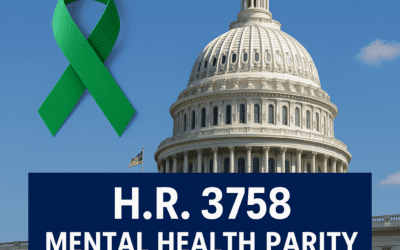Although the Affordable Care Act, also known as Obamacare, has eliminated health insurers’ exclusion of insureds who have pre-existing conditions, such exclusions remain enforceable in disability insurance policies.
However, a recent non-precedential ruling issued by the 11th U.S. Circuit Court of Appeals, Bradshaw v. Reliance Standard Life Insurance Co., 2017 WL 3774536 (11th Cir., Aug. 31), defined the permissible parameters of an insurer’s ability to invoke such an exclusion.
The case involved Julissa Bradshaw, who became disabled after suffering a stroke caused by pre-eclampsia, a complication of pregnancy. Because Bradshaw was pregnant at the time the policy first went into effect, Reliance invoked its exclusion for any disabling impairment “contributed to” by a “pre-existing condition,” which the policy defined to mean “any Sickness [including pregnancy] or Injury for which the Insured received medical Treatment, consultation, care or services, including diagnostic procedures, or took prescribed drugs or medicines, during the three (3) months immediately prior to the Insured’s effective date of insurance.”
Although the policy terms required the court to defer to Reliance’s decision, the court sided with the plaintiff, maintaining a legally wrong determination “necessarily is arbitrary and capricious.” The court looked to precedents involving accidental death insurance cases to interpret the meaning of the phrase “contributed to”; the panel concluded such terminology is subject to a “substantially contributed” test. Under that test, “the language ‘directly and from no other causes’ precludes recovery for otherwise covered events only where another condition ‘substantially contributed’ to the loss.”
Hence, “the mere fact that another factor contributed to the loss in some way is not enough to trigger the exclusionary clause.” The court applied the same test to the pre-existing condition exclusion in the Reliance disability insurance policy.
The court was further guided by Fought v. UNUM Life Insurance Company of America, 379 F.3d 997, 1011 (10th Cir. 2004) (per curiam). That case also involved a pre-existing condition exclusion where the insured had underlying coronary artery disease that necessitated surgery. The surgical wound became infected, and the infection “rather than the underlying cardiovascular condition” resulted in Fought’s disability.
The insurer sought to exclude coverage for the disability because the surgery was necessitated by the cardiac condition, but the court rejected Unum’s interpretation of its pre-existing condition exclusion.
“The exclusion,” the Fought court noted, “cannot merely require that the pre-existing condition be one in a series of factors that contributes to the disabling condition; the disabling condition must be substantially or directly attributable to the pre-existing condition.” (Emphasis added; citation omitted.)
The 11th Circuit criticized Reliance Standard for making a similar “but for” argument: “but for Bradshaw’s pregnancy, she would not have developed high blood pressure; and but for her high blood pressure, she would not have developed pre-eclampsia; and but for her pre-eclampsia, she would not have suffered a stroke; and finally, but for her stroke, Bradshaw would not have become totally disabled.”
Since multiple factors intervened between Bradshaw’s normal pregnancy and her stroke, the court agreed with the 10th Circuit that stretching the pre-existing condition clause in such a manner “runs directly counter to ERISA’s central goal of protecting the interests of employees and their beneficiaries in employee benefit plans.” (Citation omitted.)
Since the only medical condition for which Bradshaw received treatment during the look-back period was a healthy pregnancy, the court concluded that her pregnancy did not “substantially contribute” to her disability since there were no signs of difficulty or complications until well after the policy’s inception. The court further observed that the connection Reliance Standard was trying to draw “simply requires too much attenuation.” Thus, the court deemed the application of the pre-existing condition exclusion unreasonable.
The court also found its conclusion was consistent with the opinions of the insurer’s medical consultant. The consultant acknowledged that while the pregnancy was underway during the look-back period, there was no evidence suggesting Bradshaw was experiencing or about to experience a neurovascular or hypertensive disorder; and that pre-eclampsia was neither present nor predictable during the look-back period.
The Fought case cited in this ruling contains several useful observations and internal citations that reinforce the conclusion reached in Bradshaw. For example, Fought cited an article that explained:
“[B]efore imposing a pre-existing condition limitation, plan sponsors must carefully evaluate whether a particular condition is ‘directly attributable’ to the pre-existing condition. Medical conditions which merely ‘contribute toward’ accidents or illnesses, but are not ‘directly attributable’ to the pre-existing condition may not be excluded.” John R. Hickman, “Insurance Law: What Every Lawyer and Businessperson Needs to Know,” Health Insurance Basics: ERISA, FMLA, ADA, ADEA, COBRA, HIPAA, and PARCA, 584 PLI/Lit 413, 487 (May 1998).
Fought also cited other similar cases, the most notable of which was Vander Pas v. UNUM Life Insurance Company of America, 7 F.Supp.2d 1011 (E.D. Wis. 1998).
The court described that case and its outcome: “[T]he plaintiff had suffered from a pre-existing heart condition for which he took the drug Coumadin. Coumadin puts a patient at risk for a subdural hematoma. The patient did suffer a subdural hematoma, and UNUM attempted to deny coverage on the theory that the pre-existing heart condition had caused him to take Coumadin, which had then caused the hematoma. The district court in Vander Pas described the chain of causality as ‘attenuated: The plaintiff’s atrial fibrillation caused him to take Coumadin, which brought about his subdural hematoma, which produced his disability.'”
The court faulted UNUM for not providing a “proximate cause analysis,” among other failings. The district court therefore denied UNUM’s motion for summary judgment.
The Bradshaw ruling, along with Fought, are important decisions circumscribing the circumstances under which pre-existing condition exclusions are appropriately applied. The 11th Circuit should consider rethinking its initial decision to issue Bradshaw as a non-precedential ruling since few individuals are in absolutely perfect health when they take out coverage and need as much legal ammunition as they can get to battle improper coverage denials in their times of need.
This article was initially published in the Chicago Daily Law Bulletin.






